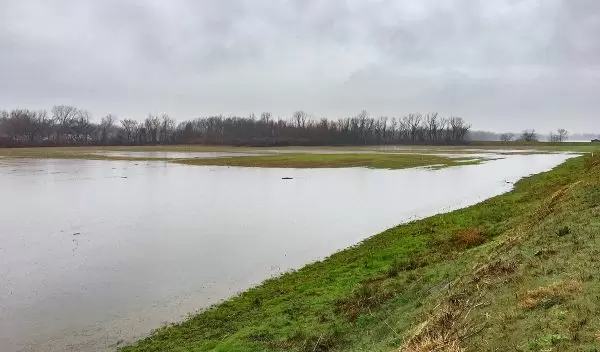
'Plaza' in ancient city of Cahokia near today’s St. Louis was likely inundated year-round
However, new U.S. National Science Foundation-supported paleoenvironmental analyses call into question earlier interpretations of the north plaza’s role in Cahokian society, suggesting that it was almost always underwater. The study is reported in the journal World Archaeology.
Cahokia was built in the vicinity of present-day St. Louis, beginning in about A.D. 1050. It grew and thrived for more than 300 years but was abandoned by 1400. Many mysteries surround the culture, layout and architecture of the city, in particular its relationship to water.
Cahokia was built in a flood plain below the confluence of the Mississippi and Illinois rivers and would have been regularly infiltrated with flowing water, said Caitlin Rankin, a geoarchaeologist at the Illinois State Archaeological Survey who conducted the research. "Cahokia is the largest archaeological site in North America, but only about 1% of it has been excavated, so there’s much about the site we don’t know," Rankin said.
Early in her encounters with the city’s layout, Rankin was baffled by the location and height of the north plaza. "It’s a really strange area because it’s at a very low elevation, the lowest elevation of the site," she said. "And it’s in an old meander scar of the Mississippi River."
Two creeks ran through the area, and it likely flooded whenever the Mississippi swelled after heavy rains. Rankin took cores and soil samples and used stable carbon isotopes to help establish what kinds of plants lived in the area – finding evidence for wetland plants.
"What I learned is that this area remained wet throughout the year," Rankin said. "There may have been some seasonal dryness, but overall, it was a wetland." Her findings challenge previous notions about the site as a plaza, a dry open area across which people walk and congregate. "Generally, those places aren’t underwater," Rankin said.
How the north plaza was used remains a mystery, she said, but the study adds to the evidence that water was a central element of the city.
"This research is significant not only for what it reveals about Cahokia but also because it calls into question a basic archaeological assumption regarding prehistoric plaza use," says John Yellen, director of NSF’s Archaeology and Archaeometry Program.


